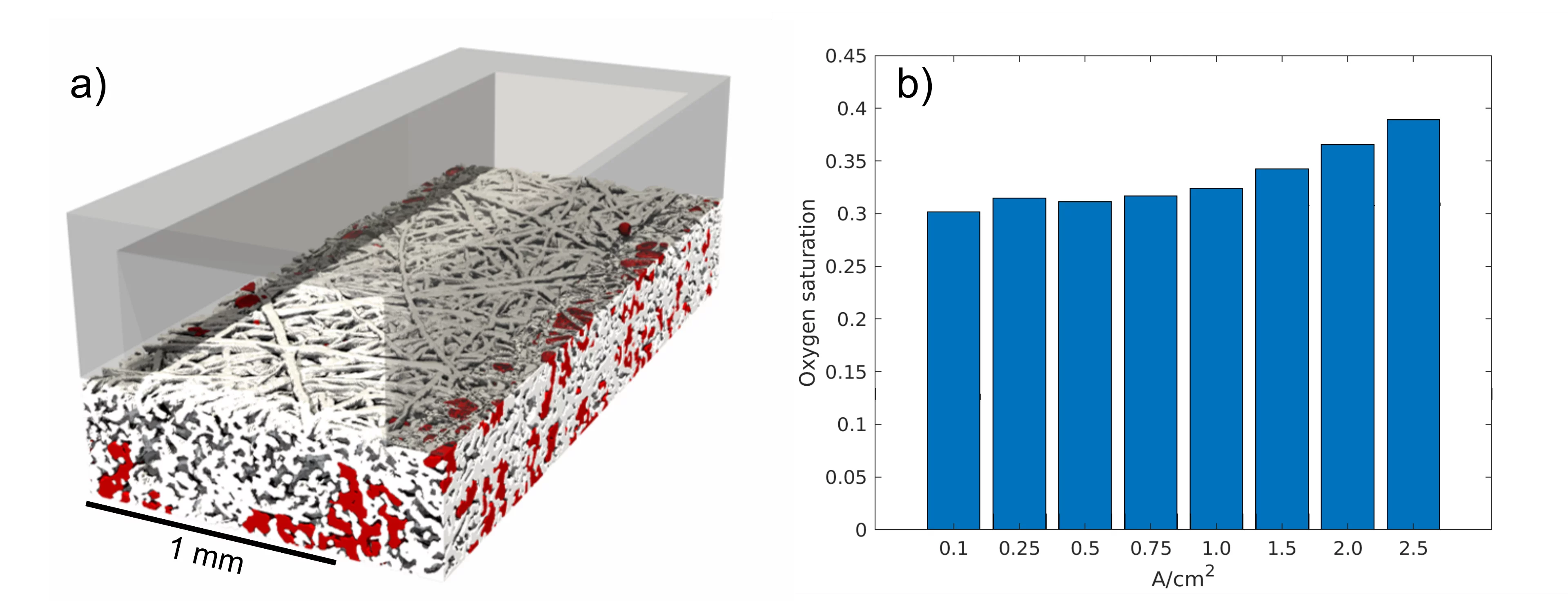PSI researchers have developed a new methodology for studying the complex transport processes in polymer electrolyte water electrolysis (PEWE). Using advanced operando X-ray tomographic microscopy, we were able to observe for the first time the formation of oxygen pathways in the porous transport layer, in three dimensions. Understanding oxygen transport is crucial for improving PEWE technology and this work provides precious insights for the design of future, better-performing PEWE cells.
Based on the development of a new imaging methodology, the nature of the complex two-phase transport occurring polymer electrolyte water electrolysis (PEWE) is studied. With a novel 3D-printed operando cell, the use of advanced operando X-ray tomographic microscopy at the TOMCAT beamline fo SLS, and innovative data analysis techniques, we were able to make the first observation of the oxygen transport in a representative titanium anodic porous transport layer (PTL) during operation. Results show how oxygen forms stable pathways inside the bulk of the PTL, but the pathways get disrupted in the proximity of the water channel. From the correlation with electrochemical data, it is shown that the oxygen saturation in the cell does not increase considerably with current density and that the majority of the oxygen accumulates near the catalyst layer. Furthermore, the water tends to occupy the smaller pores of the PTL and oxygen the larger ones. The emerging oxygen pathways are organized in many distinct and unconnected clusters. However, with increasing current density, small bridges are formed and more clusters get connected. Learning from these unique findings, we proposed a set of guidelines for realizing better performing PTL materials, able to operate more efficiently at high current densities. Water occupies the smaller pores, and to avoid the oxygen invasion into these pores, which deteriorates transport in the water network, we propose the realization of anisotropic PTLs having a smaller in-plane throat size distribution than through-plane throats. The presented results and future experiments using different PTL types will pave the way for the development of more rationally designed and better performing PEWE PTLs.
Contact
Dr. Felix N. Büchi
Head Fuel Cell Systems and Diagnostics Group
Paul Scherrer Institut
5232 Villigen PSI
Switzerland
Telephone: +41 56 310 24 10
E-mail: felix.buechi@psi.ch
Original Publication
Unraveling two-phase transport in porous transport layer materials for polymer electrolyte water electrolysis
Salvatore De Angelis, Tobias Schuler, Margarita A. Charalambous, Federica Marone, Thomas J. Schmidt, Felix N. Büchi
J. Mater. Chem. A, 9, 22102-22113 (2021)
DOI: 10.1039/d1ta03379d

